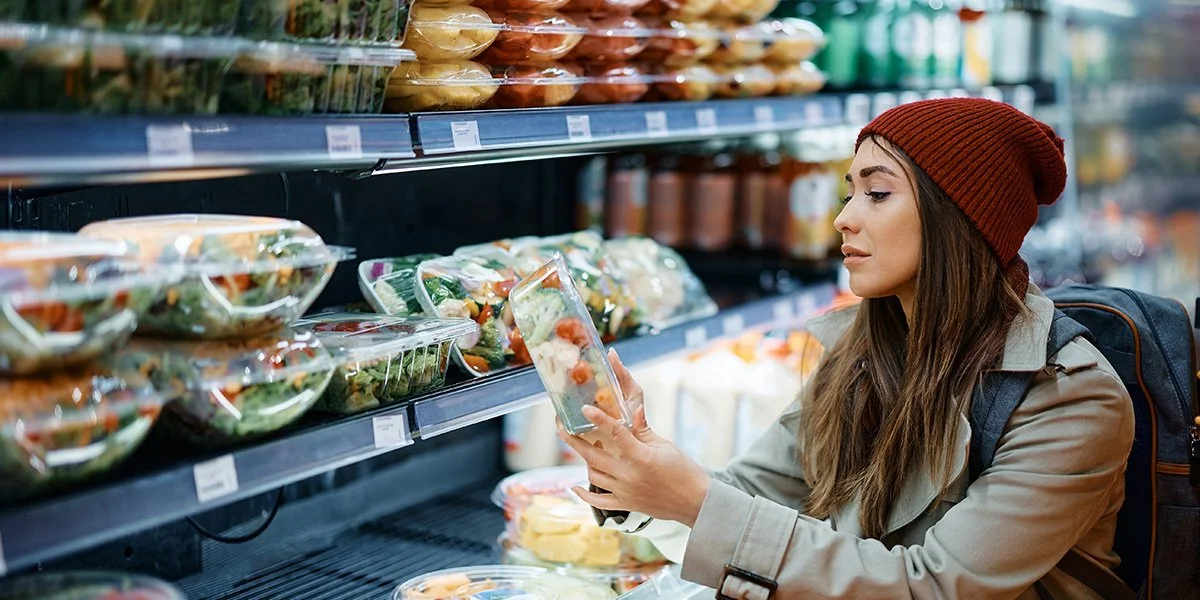In My Opinion: Food Waste, Forgotten Effort and the Suppliers Behind the Produce
By Andrea Steel, Qualitative Specialist, F!S Group
Perfectly edible — and completely wasted. Behind every discarded crop is a story of effort, energy, and lost opportunity.
Food waste is one of the biggest contributors to greenhouse gas emissions, and yet, when we talk about sustainability in food, it’s often a footnote. The truth is, tackling food waste means tackling complexity: in production, in planning, in packaging and in perception.
That’s why, for this edition of In My Opinion, we wanted to bridge the gap. We consulted with three leading fresh produce suppliers; Barfoots, DPS, and G’s Fresh, to understand the strategic and often invisible ways suppliers are working to reduce waste.
Then we brought that story to consumers, through our national panel, to see what they knew, expected and cared about when it came to food waste.
The contrast was revealing. But it also showed a clear path forward.
What Suppliers Are Really Doing
As suppliers like Barfoots shared, food waste is rarely about carelessness. It’s about the unpredictability of growing conditions, changing consumer demand, and the strict aesthetic requirements of retail.
“We try to grow the best quality we can... but it never works out perfectly because of the weather — not to mention all the other variables driving demand.”
— Kim Barfoot-Brace, Barfoots
In practice, this means suppliers are tackling waste from every angle:
Donating out-of-spec or surplus produce to FareShare and UKHarvest
Repurposing “wonky” vegetables into prepared products like butternut squash noodles or sweet potato chunks
Using anaerobic digestion (AD) to turn veg waste into energy, fertiliser and heat
Exploring packaging innovations to extend shelf life and reduce waste at home
Making hard choices around packaging vs perishability; sometimes more packaging does mean less waste
Despite all this, most consumers don’t see it. Or if they do, they’re unsure who’s responsible, or how much it should matter.
What Consumers See; and Miss
When we asked our community, the answer was clear: consumers see waste. But they mostly see it at home or in store; not on the farm.
They told us they try to reduce their own waste by:
Buying smaller quantities, e.g. selecting loose rather than pre-packed fruit and veg where possible
Planning meals better
Freezing leftovers
Choosing pre-prepped or frozen veg for flexibility
But they also blame supermarkets for excessive packaging, bulk promotions, and short-dated stock. And few could name a single thing suppliers were doing behind the scenes to reduce waste.
Yet once they were shown the extent of supplier efforts, the reaction was consistent: admiration, surprise, and a wish for greater visibility.
“We had no idea this was happening. Why aren’t suppliers talking about this more?”
There’s the challenge; and the opportunity.
Sustainability matters; but only if the value is clear and the price feels fair.
Do They Care Enough to Pay More?
Maybe. But not blindly.
Consumers were consistent: they value sustainability, but only if it’s relevant, simple, and doesn’t cost too much more. They don’t want to read lengthy packs. They don’t have time to research supply chains. They need signals; logos, clear claims, proof in action.
They also questioned the fairness of paying a premium if others in the chain (retailers or government) aren’t doing their bit.
“If I knew a product used veg that would otherwise go to waste, and it tasted just as good; I’d choose it. But not if it’s double the price.”
The appetite is there. But so is the price sensitivity.
Carbon, Compost and Confusion
The research also exposed blind spots in carbon and soil health.
For example, many assumed that British = lower carbon footprint. They were shocked to learn that asparagus from Peru can have a lower footprint than UK-grown in heated tunnels. They were equally surprised to learn that food waste contributes more to global emissions than aviation.
Few had heard of regenerative agriculture, but were immediately interested. The idea that soil quality, biodiversity, and long-term food security are linked felt both important and urgent.
But again; they want simplicity. Not sermons.
“I care. But tell me in a sentence, not a scroll.”
Convenience or concern? Consumers weigh up the role of packaging in their fight against food waste.
Packaging: Problem or Protector?
This was perhaps the most contradictory space of all.
On one hand, consumers are trying to reduce plastic and prefer loose produce. On the other, they admitted that packaging helps them reduce waste at home, choose products with longer shelf lives, and store items more easily.
They were open to more packaging; if it served a purpose, such as reducing food waste or protecting repurposed out-of-spec produce.
They also want portion flexibility; the ability to buy only what they need, especially in smaller households.
Shared Accountability, Clearer Visibility
The strongest takeaway from our work with both suppliers and consumers was this: everyone agrees food waste is a shared responsibility, but few understand who’s doing what; or what really makes a difference.
That’s where visibility comes in.
Consumers called for something akin to a “Fairtrade for food waste”; a single label or symbol that shows effort, intent and impact. Something they can use at a glance to support products with a story.
They also asked retailers and brands to talk more about where their food comes from, how it’s grown, and how waste is being tackled.
Because when they know, they care.
In Conclusion
Food waste isn’t just a byproduct. It’s a pressure point; for suppliers, for retailers, and increasingly for consumers.
The good news is, the effort already happening across the sector is impressive. From anaerobic digestion to carbon labelling pilots, from community food redistribution to regenerative soil practices; suppliers are doing far more than they’re given credit for.
The next step? Sharing it. Simplifying it. And connecting those stories to the people who want to make better choices, but need the tools to do it easily.
At F!S Group, we’ll continue to bridge these conversations, because better understanding between suppliers and people is how real progress begins.



